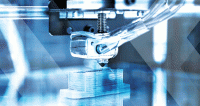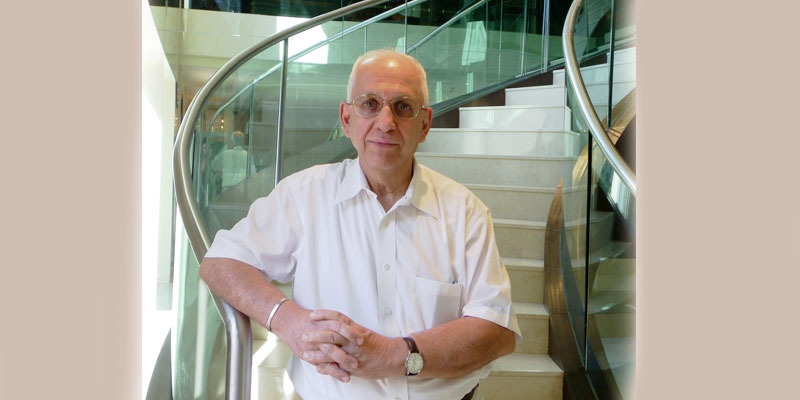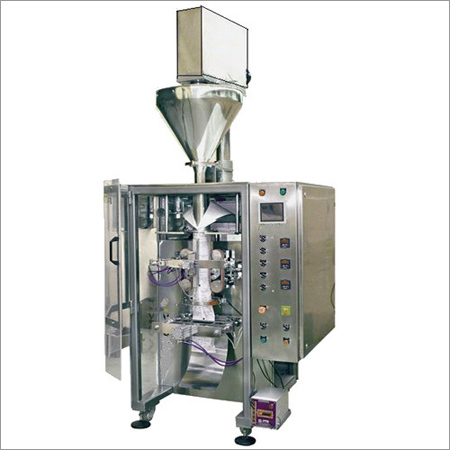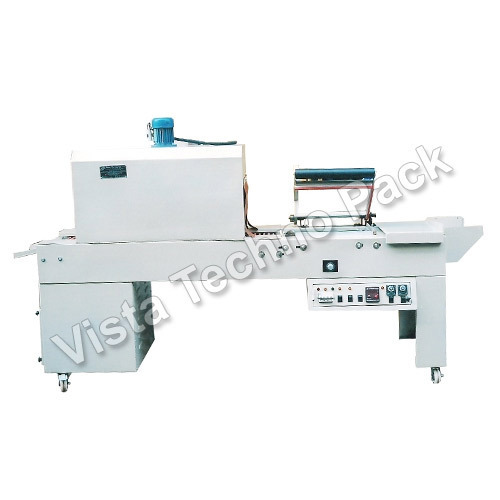Schedule a Call Back
3D Printing: Adding a new dimension to manufacturing
 Technical Articles
Technical Articles- Apr 01,18

Though automotive companies are using additive manufacturing (AM) to make limited products, its usage will increase with evolution in product and supply chain requirements. In this ever evolving market, Rakesh Rao says that AM can become a potential game changer for future operations of automotive businesses.
On June 5, 2017, ISRO created a history by launching India's heaviest rocket carrying communication satellite GSAT-19 from the Satish Dhawan Space Centre in Sriharikot. The GSAT-19 has been credited for being a game changer communications satellite for India. This launch was a unique accomplishment for ISRO as the India’s premier space research organisation had used an additive manufacturing (AM) engineered component in GSAT-19. The component was developed and manufactured with technology provided by EOS in partnership with Wipro 3D.
Additive manufacturing refers to a process by which digital 3D design data is used to build up a component in layers by depositing material. The term ‘3D printing’ is increasingly used as a synonym for additive manufacturing.
Medical technology (medtech) and aerospace & defence (A&D) industries have been pioneers in using AM technology and have set the benchmark on how AM can be applied in production of customised products. Not far behind is automotive industry, which is now leading in the application of AM in mass customisation.
“In the age of cutting-edge technologies and stiff competition, organisations around the globe need to accept and adapt to far more advanced technologies that would help them innovate faster and better than their competitors. One of the leading sectors in India for us is automotive who are seeing the advantages of additive manufacturing and are increasingly open to experimenting with the technology,” says Anand Prakasam, Country Manager (India), EOS – one of the leading players in e-manufacturing solutions. EOS has about 80 per cent market share in metal 3D printing in India and has a presence in sectors such as aerospace, automotive, heavy engineering, tooling, healthcare including dental among others. Indian automotive manufacturing has high barriers to entry, especially at the top where the five largest OEMs account for over 80 per cent market share. On the other hand, the auto parts and accessories manufacturing sector is characterised by high competition among a large number of smaller players. Hence, companies (auto OEMs as well as auto component makers) have to focus on specific capabilities that can lead to greater competitiveness to survive and succeed in such an environment.
Additive manufacturing offers unlimited possibilities in producing components with functional integration (reducing the joints and number of parts needed). This provides companies flexibility and agility in production processes, thus helping them gain competitive edge.
“Automotive industry has been one of the earliest adopters of additive manufacturing - automotive OEMs started it, while their tier1-2 suppliers followed them. Today, most of the major automotive OEMs (both in the consumer as well as the commercial sector) in India as well as globally have extensively been using it, and inculcating these practices to their suppliers to increase overall efficiency and effectiveness of the supply chain,” explains Prasad Rodagi, Founder Director, Altem Technologies - an engineering firm with core strengths in product life cycle management (PLM), advanced and AM solutions and 3D digitisation technologies. Altem serves customers from leading Indian and global companies across diverse segments such as aeronautics, defense, electronics, medical, manufacturing, space research and academia in association with Dassault Systemes, Stratasys Ltd, MSC Software and Artec3D for PLM software, AM technologies, simulation software and allied services, respectively.
Automotive is a mass manufacturing industry, typically a car or bike manufacturer produces vehicles on an assembly line as quickly as 3-4minutes per vehicle. It becomes very important that all stages of the production (starting from design to assembly) and pre-manufacturing are perfect to ensure high throughput and profitability. Rodagi informs, “AM started with a design (form, fit and styling) validation application and soon translated into functional and endurance testing applications. It is now moving into the shop floor with companies replacing traditionally manufactured multi part metal jigs, fixtures and assembly tools into light weight, ergonomic and consolidated tools to improve efficiency and reduce cycle time in the shop floor.” Some of the key OEMs in the truck, car and off-road vehicle segment in India extensively use additive manufacturing and are enjoying extensive benefits by cutting down manufacturing lead times to a fraction of the traditional methods.
The process
Additive manufacturing has evolved into a production and manufacturing technology that displaces or complements conventional processes in an increasing number of applications across the complete industrial spectrum. The technology allows a 3D digital model to be perfectly reproduced as a solid metal object. Additive manufacturing has the ability to build parts on demand with designs that include internal cavities and lattices - known as bionic structures, which reduce weight and maximise strength without compromising mechanical performance.
“Moreover, using integrated design and analysis software on a unified platform enables ‘hard points’, ie points of contact, to be defined as design drivers. This means that points of contact, space envelopes and functional and structural requirements can be used to define forms automatically in a process called Generative Design. Integrating finite element (FE) analysis into the design process in real-time makes it possible to validate products for structural characteristics under different operating scenarios,” says Shree Harsha, Business Consulting Director of Dassault Systemes, which offers a full portfolio of integrated applications for additive manufacturing that works seamlessly across design, manufacturing and in-service performance.
The user can innovate while justifying the investments in additive manufacturing by adopting a digital thread that connects design and manufacturing for taking concepts to production. Shree Harsha adds, “Now, we have advanced the 3DEXPERIENCE platform again, adding the 3DEXPERIENCE Marketplace. This transactional marketplace matches those who need services with those who can provide them, beginning with industrial and certified 3D printing. 3DPrint is an intermediation service operated by Dassault Systemes. It connects the industrial ecosystem of designers, engineers and production planners with manufacturing service providers.”
Types of AM technology
Automotive industry is mostly using two types of technologies - fused deposition modeling (FDM) and selective laser melting (SLM). Rodagi explains, “FDM is used for plastic/composites fabrication of prototypes, functional and assembly test components, jigs, fixtures etc. Plastic AM is also being used in composite tooling for ducts and intakes. FDM is versatile, offers a variety of strong and functional materials and the flexibility to easily interchange between them according to the demand of the application. On the other end of the spectrum, SLM is used for direct metal components manufacturing for advanced functional testing of components which face heavy stresses.”
AM proves to be the efficiency enhancement tool, both in the pre-manufacturing and production stages. In pre-manufacturing stage, AM enables customers to reduce prototyping times drastically, thus enabling quick and easy iterations. It allows pre-manufacturing functional testing feasibility to ensure efficient product. In the production (assembly) stage, it is being used for jigs and fixtures to make these tools lighter, easier to use and consolidated. This, Rodagi says, reduces cycle time and ensures cut down in fabrication (of jigs and fixtures) costs, lead times and increase in work place safety. He claims that customers have managed to reduce the weights of hand held tools by up to 80 per cent to ensure that more number of vehicles can be operated upon and hence more profits.
Automotive companies are really working hard towards integrating 3D printing technology in their manufacturing processes. Prakasam informs, “In the past, the automotive industry mostly used the technology for rapid prototyping (RP) applications and now it is moving more towards manufacturing applications as costs-per-part improve. They have been trying to see how they can use this technology for all their engine manufacturing and other smaller components as well.”
As AM technology can produce components with fewer design restrictions, the flexibility is extremely useful while manufacturing products with custom features, making it possible to add improved functionalities such as integrated electrical wiring, lower weight, and complex geometries that are not possible through traditional processes. “Moreover, by eliminating the need for new tooling and directly producing final parts, AM cuts down on overall lead time, thus improving market responsiveness. With the flexible manufacturing in mind to accommodate multiple models in same manufacturing line, tooling is getting modular and we see that more and more companies are adopting 3D printing for jigs and fixtures,” opines Shree Harsha.
Tips & parameters
Since the learning of additive manufacturing takes time, this technology still cannot solely be used for complete production from a material and technology standpoint, as companies still want to understand how this can affect their product manufacturing in the future.
“After installing an AM process, the manufacturers and the product designing teams need to invest some considerable time understanding the technology, what it can do for their business and how this disruptive technology will probably also change their entire approach to design, manufacturing and their supply chain,” advises Anand Prakasam.
There are three drivers that help companies create an additive manufacturing approach that transforms not only the production process, but potentially the business. These are identifying the right application, understanding materials science, and integrating additive manufacturing into the conventional production process.
Anand Prakasam explains, “Each AM technology and machine model has a unique set of parameters and settings that can be modified by the device manufacturer. Customers opt for this solution as it provides the opportunity to personalise, reduce time, flexibility and cost-effectiveness, all this without compromising on the quality of the part manufactured with a repeatable part quality.” There is general perception that the industrial 3D printing is expensive. “The main reason behind it being expensive is that organisations do not add the designing in the planning stages of the product and most often end up using parts designed for other manufacturing processes such as casting, forging and machining. Today’s systems from EOS show a deep knowledge for system, software, processes and materials. The approach at the customer might only be one next step, meaning they should be understanding the technology with a very fresh approach before, for example, starting the design process,” says Anand Prakasam.
He believes that with a rise in the adoption, there will be a resultant increase in categories which can be manufactured from this technology, making machines cheaper. For example: Maybe a machine only for the tooling industry.
Regulations and R&D
As India heads towards Bharat Stage VI (BS VI) emissions norms and Bharat NCAP crash norms, safety and emissions are on the top of mind of every designer too. AM can help auto companies to meet the requirements of new norms with ease. Shree Harsha informs, “About 20 years ago, the roof-strength requirement to resist rollover crash was roughly the weight of the vehicle. Today, rollover strength is about four times the gross vehicle weight. Optimising the maximum strength with minimum weight and material is possible with a process called topographical optimisation. If one performs topological optimisation, it is virtually impossible to manufacture with traditional methods, but 3D printing has the potential to handle complex geometries in a minimal waste process with lightweight materials.” With the Ministry of Road Transport and Highways planning to allow only electric vehicles for sales by 2030, automobile companies are putting huge thrust on research and development (R&D). Even here 3D printing technology can be a handy tool. “Additive manufacturing technology can play a major role in meeting these objectives by enabling these organisations to accelerate the development and reduce the cycle time in R&D,” says Prasad Rodagi.
AM: A game changer
Though automotive companies are using AM to make limited products, its usage will increase with evolution in product and supply chain requirements.
Prasad Rodagi explains, “Few years ago, additive manufacturing was only used for form and fit testing, then it found its place in the shop floor and now it is moving from rapid prototyping to rapid production and rapid tooling. AM allows complete design freedom which means the user no longer need to design according to constraints that exist in traditional processes. This helps customers do extensive topology optimisation, make lighter and efficient components with consolidated sub-assemblies. In cases where the components cannot be made using direct AM, tooling for applications such as composites, etc can be printed directly and used or tooling inserts can be made using SLM with inbuilt conformal cooling channels which makes a huge reduction in cooling time.”
Vendors of 3D printing technology are banking on auto industry for growth as demands for AM picks up. “We are ready for the change that has already begun to help the automotive industry and our customers at large to meet their challenges and be a part of their success story. In the fast-changing landscape, we expect about 20 per cent to 30 per cent growth in business,” he says.
While 3D printing may not become the default manufacturing technique in the future, it will nonetheless play an important role in re-shaping the automotive landscape in the country. “Additive manufacturing has already been used in the industry for a range of different vehicle parts. But its uses are set to expand even further, as its application is ideally suited to automotive. Additive manufacturing is altering traditional manufacturing and supply chain pathways. It has completely transformed the potential ways in which products are designed, developed, manufactured, and distributed. For the automotive industry in particular, additive manufacturing has opened doors for newer designs (cleaner, lighter, and safer products) and shorter lead times while lowering costs,” opines Shree Harsha. With rapidly shrinking life cycles for new vehicles, auto OEMs will have to explore ways to overcome this challenge and be competitive and profitable. In this ever evolving market, additive manufacturing can become a potential game changer for future operations of automotive businesses.
Q U O T E
In the past, auto industry mostly used AM for rapid prototyping applications and now it is moving more towards manufacturing applications as costs-per-part improve. - Anand Prakasam, Country Manager, EOS India
Additive manufacturing technology can play a major role in meeting these objectives by enabling these organisations to accelerate the development and reduce the cycle time in R&D. - Prasad Rodagi, Founder Director, Altem Technologies
By eliminating the need for new tooling and directly producing final parts, AM cuts down on overall lead time, thus improving market responsiveness. - Shree Harsha, Business Consulting Director of Dassault Systemes
Related Stories

For the foreseeable future, multiple fuels will coexist and grow: Farrokh Cooper
In this conversation with Rakesh Rao, Farrokh Cooper, CMD, Cooper Corporation, shares his views on manufacturing, technology and the road ahead.
Read more
Positioning PVNA Group as a global clean mobility partner: Viveka Bhandari
The aim is to position the PVNA Group as a trusted global partner for advanced mechatronic and clean mobility solutions
Read more
High-Speed Clean Room Doors for Controlled and Regulated Environments
High-speed clean room doors are specialised industrial doors essential for maintaining controlled environments, providing an airtight barrier and enhance hygiene, safety, durability, and regulatory ..
Read moreRelated Products

Automatic Food Snacks Packaging Machine
Grace Food Processing & Packaging Machinery offers
automatic food snacks packaging machine.

Collar Type Servo Auger Machine
All India Packing Machines offers collar type servo auger machine. Read more

Shrink Tunnel
Vista Technopack Machines offers a range of online shrink tunnel with L sealers. Read more












